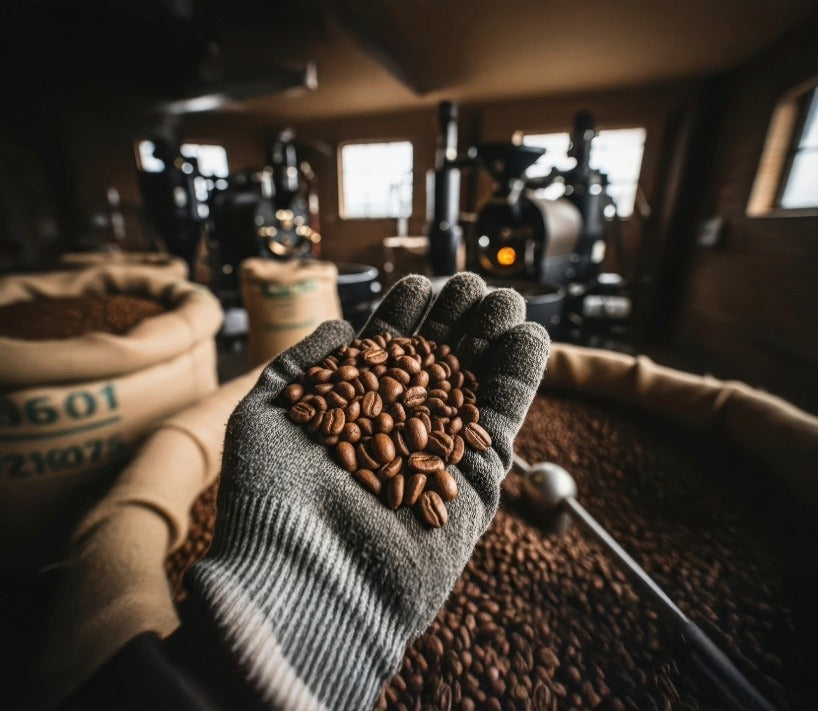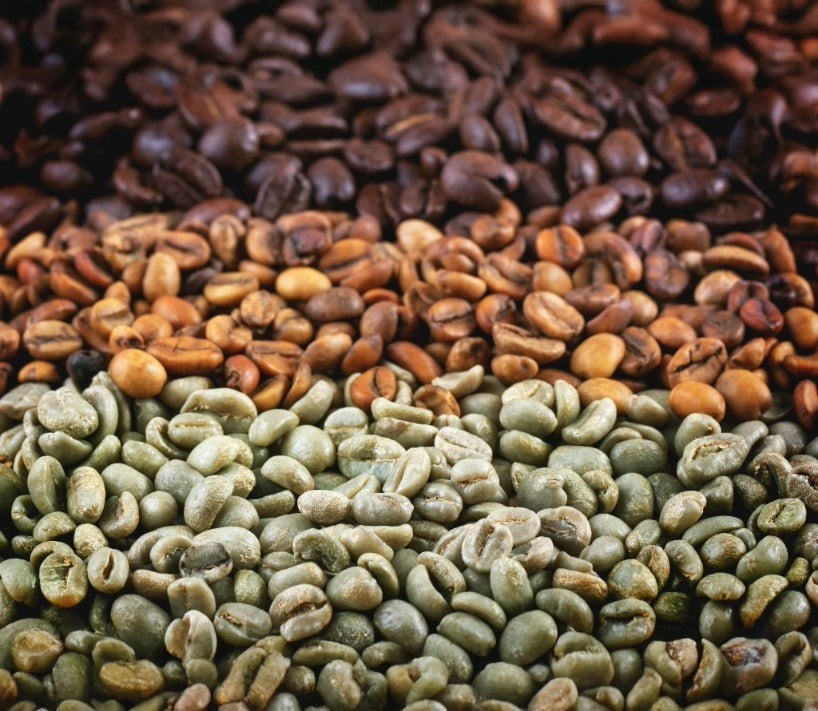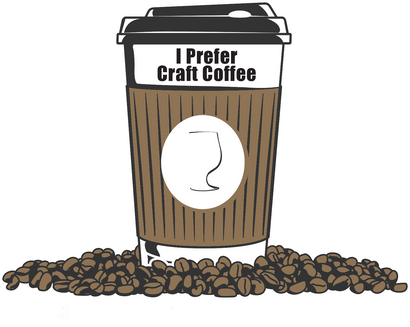Brewing Coffee at Home: Why Your Light Roast Doesn’t Have to Live in a Pour-Over Prison
July 17, 2025 4 min read
Brewing Coffee at Home: Why Your Light Roast Doesn’t Have to Live in a Pour-Over Prison
Ever look at a bag of kale-green-looking light roast and think, “Well, guess I have to drag out the swan-neck kettle and pretend I’m auditioning for a barista documentary”? Me too—until I realized brewing coffee at home isn’t supposed to feel like following the Ten Commandments of Caffeine. Spoiler: that same light roast can pull a bright, zippy shot of espresso or chill happily in your trusty drip machine. The coffee police won’t cuff you—promise.
Wait, Don’t I Have to Match Roast to Method?
Coffee lore says:
| Roast Level | “Approved” Method | Why the Legend Exists | What Actually Happens |
|---|---|---|---|
| Light | 💧 Pour-over | Slow dripping keeps temps in check and spotlights origin notes (think peach, jasmine, unicorn tears). | Those same fragrant acids pop in espresso, AeroPress, and even batch brewers—if you tweak grind & dose. |
| Medium | ☕ Drip/Filter | Balanced sweetness + body fits Mr. Coffee’s personality. | Medium roasts crush in French press and moka pots too—hello chocolate & caramel. |
| Dark | 🔥 Espresso/French Press | Higher solubles = fast extraction; bold body withstands pressure. | Dark roasts can taste velvety in pour-over (just lower water temp) and behave politely in cold brew. |
(You can copy-paste this into your fridge for daily rebellion.)
Myth #1: “Light Roasts = Sour Shots”
The sour-shot horror story usually traces back to grind size or brew ratio, not the roast. Tighten the grind, up the dose, and bam—bright turns to balanced. I once dialed a washed Ethiopian Yirg (90 + SCA score, if you’re into numbers) for espresso at 1:2.3 ratio in 32 seconds. Result? Peach-tea sweetness, zero lemon-puckering. Friends called it “summer in a demitasse,” which beats “battery acid” any day.
Myth #2: “Dark Roasts = Ashtray Pour-Over”
Use 90 °C/195 °F water instead of your usual 96 °C/205 °F, extend bloom, and dark roasts mellow faster than a puppy in a sunbeam. Body will stay chewy, but the ashy bite plummets.
Myth #3: “One-Size Brew Guides”
Most brew charts were printed when people still asked Jeeves. They ignore grinder quality, water mineral content, altitude, and your taste buds. Brewing coffee at home means you control every knob and slider—and yes, you should twist them like a curious toddler.
Quick Tuning Checklist
-
Grind Size: finer yields more extraction—helpful for light roasts outside pour-over.
-
Water Temp: cooler (~90 °C) tames dark-roast bitterness; hotter (~96 °C) unlocks light-roast sweetness.
-
Ratio: start 1:16 for filter, 1:2–1:2.5 for espresso, then adjust until your tongue applauds.
-
Time: longer bloom for fresh light roasts, shorter for dark.
Sprinkle in those tweaks and you’ll unwrap flavors worthy of top specialty coffee online reviews—no sacred recipe required.
So, How Do I Know What I Like?
Because brewing coffee at home is personal—think Spotify playlists, not federal law—here’s a mini-roadmap to explore best craft coffee at home on your terms:
-
Pick a Single Coffee (maybe that funky natural you saw while you browse to order coffee online).
-
Brew Three Ways: espresso, drip, and one wildcard (French press? AeroPress? You do you).
-
Note 3 Things for each cup: sweetness, body, and aftertaste.
-
Rank Them (gold star stickers optional).
-
Iterate: Adjust one variable—grind, temp, or ratio—and keep the winner.
After two rounds, you’ll have a “flavor map” sharper than any generic brew chart. Congratulations, you’ve just sidestepped the one-size-fits-none myth and unlocked best coffee online free shipping bragging rights.
Real-World Example (aka My Kitchen Counter Experiment)
-
Coffee: Honey-processed Costa Rican, City+ roast (yeah, borderline light).
-
Method 1: V60 pour-over, 15 g : 240 g, 96 °C — pomegranate, honey, crisp finish.
-
Method 2: Espresso, 18 g : 40 g in 30 sec, 93 °C — cherry cola, milk-chocolate body.
-
Method 3: AeroPress, 16 g : 220 g, inverted 2 min, 85 °C — strawberry jam, silky mouthfeel.
Same beans, three personalities—like triplets who chose different majors. And yes, I’d happily drink all three.
Frequently Asked Questions ✨
Q1. Can I use any roast for any brew method?
A. Technically, yes. But you’ll need to dial grind, temp, and ratio to taste. Think of roast level as a starting suggestion, not a binding contract.
Q2. Why do baristas push light roasts for pour-over?
A. They’re showcasing terroir—the fancy word for “it tastes like where it was grown.” Extended extraction via pour-over makes those origin notes obvious.
Q3. What’s the easiest way to avoid sour or bitter shots when experimenting?
A. Use a calibrated burr grinder, weigh doses, and follow the finer-grind plus hotter-water rule for light roasts; coarser-grind plus cooler-water for dark.
Q4. Does freshness matter more than roast-to-method pairing?
A. Absolutely. The freshest craft coffee online (roasted < 14 days ago) will always beat stale beans, no matter how “perfect” your brew chart looks.
Q5. Do I need expensive gear to test multiple brews?
A. Nope. A basic scale, a burr grinder, and whatever brewers you already have will do. Heck, I pulled playful espresso from a $150 manual lever—no La-Marzocco mortgage required.
Your Brew, Your Rules 🎉
Congratulations—you just graduated from Coffee Myth-Busting 101 with honors (and exactly zero tuition fees). Next time someone says, “Light roasts are only for pour-over,” you can raise an eyebrow, sip your light-roast espresso, and reply, “Funny—you taste that ripe mango?”
Remember, brewing coffee at home should feel like playing in a flavor sandbox, not studying for a tax audit. Go forth, tweak fearlessly, and may every cup taste like you.
P.S. If your espresso puck still looks like the lunar surface, don’t panic—experimentation is half the fun. The other half is bragging about your discoveries while your friends keep scrolling for the best coffee bean delivery.
Also in Best Coffee To Buy Online Education

Small Roaster Coffee Beans USA: Why Supporting Local Roasters Matters
January 06, 2026 3 min read
Learn why buying from small batch coffee roasters online in the USA delivers fresher coffee, better flavor, and stronger local impact. Order coffee online from a roaster you trust. It's the only way to get the best tasting craft coffee at home.

Worst Coffee To Buy At Home (And What To Buy Instead)
January 05, 2026 3 min read
The best craft coffee to drink at home starts with fresh, high-scoring small batch specialty coffee online. Costume coffee is just commercial coffee marketed to look like specialty coffee. It's game I won't play.

Order Freshly Roasted Coffee Beans Online (And Take Control of Flavor)
January 04, 2026 3 min read
Order freshly roasted coffee beans online and control flavor at home. Get better coffee with fresh roasted coffee beans online.
